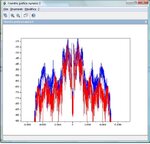ajex
Member level 4
Need a Method for compare 2 waves
hello all..
This is my problem..
* I have two different sound clips ( actually those are Phonemes in sinhala language) and I have Attached in to this Thread
* now i want to compare those wave forms and need to prove, that those are approximately same wave forms. (frequency and shape)
Please tell me a method to do that, thank you very much...............!
hello all..
This is my problem..
* I have two different sound clips ( actually those are Phonemes in sinhala language) and I have Attached in to this Thread
* now i want to compare those wave forms and need to prove, that those are approximately same wave forms. (frequency and shape)
Please tell me a method to do that, thank you very much...............!
